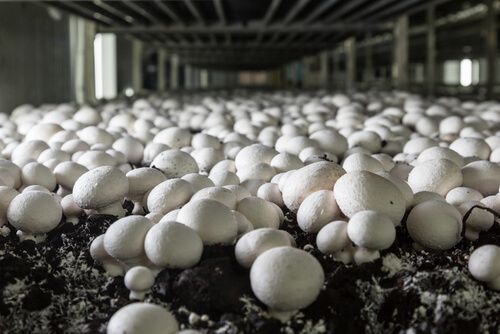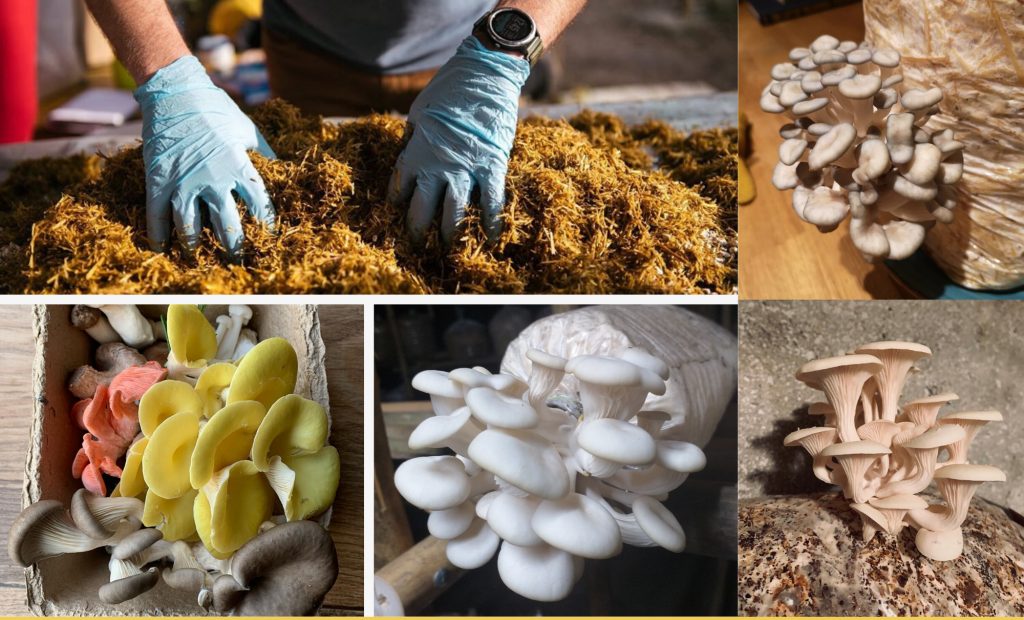
Mushroom farming, which started many years ago, today is one of the most rapidly growing farming businesses. As a business, the predicted growth rate is 10% over the next 5 years. And the US is the world’s second-largest producer.
The mushroom industry has a promising future, its farming is taking off in sheds, garages, and suburbs. Mushroom is gaining momentum as a versatile ingredient in food and also as an immunity booster. Since many people are cooking at home, and trying interesting recipes, there is a good demand for mushrooms.
Steps to mushroom farming

Mushroom is important not only as a food, but it has medicinal uses also. Due to the huge demand abroad, the export of mushrooms is slowly picking up. In this article, we will tell you how to start a business in mushroom farming.
1. Space
Mushroom cultivation requires little land. You can set up a unit in a 20ft x 20ft room, and produce around 50 Kg per week. It is a low-investment small business, where you can start to make profits within a few weeks. When your business scales up, you can rent a small building.
2. Training
The cultivation of mushrooms requires study and experience. You must learn about the science and technology of mushroom growing. There are many online courses available for training.
3. Spawn/Eggs
You have to collect the mushroom spawn, also called eggs from the local market. Or, you can produce your spawn through a sterile culture. This will be cheaper in the long run.
4. Materials Needed
To grow the fungi, you can use disposable plastic bags or buckets with holes on the sides to allow the mushroom to sprout. You will need to buy substrates like straw or wood chips.
5. Base for mushrooms
Mushroom cultivation is part of a circular industry where waste products can become an income stream. The mushroom’s growing medium or substrate is a by-product of growing grains and legumes. Mushroom farms generally use sawdust or wood pallets to grow mushrooms. To make the substrate that mushrooms like to have, you have to buy organic softwood fuel pellets, wood chips, and soy hulls. Then you have to mix these two ingredients in a biodegradable bag, and then add water to get the right moisture content.
6. Process of growing mushrooms
You can grow mushrooms both indoors and outdoors.
Indoor Cultivation
Indoor cultivation requires some planning, technical experience, and investments. Here you put the culture medium into a steriliser, which can be a big drum, to kill any bacteria or mould. Wait 20 hours for the substrate to sterilise. Then you have to cool down the heated substrate from about 95 degrees to room temperature, which can take a few days.
You have to introduce scoops of mushroom mycelium into the bags of sterile substrate. Then the mycelium will start to consume the substrate. There is a layer of grain over the sterile substrate. You have to mix that grain with the substrate to speed up the colonisation time of the mycelium. In about two weeks, these bags will be ready to grow mushrooms.
You have to shift the inoculated bags to an incubation room. You have to maintain the temperature in this room between 21 to 22 degrees C at all times. That is the ideal temperature for the mycelium to move through the substrate and start consuming it.
In about two weeks, the bags will start to turn white as the mycelium fully colonises them. Then you have to shift the bags from the inoculation room to a fruiting chamber. This chamber must have the following four things:
- A temperature within a certain range
- A very high humidity
- Lights of a certain spectrum
- Low carbon dioxide levels
You have to make a small hole in the face of each bag. This is to allow the fresh air and humidity to touch the mycelium and the substrate. The mushroom will then start growing.
After one week, you will get a nice bouquet of fresh mushrooms out of each one of these. Then, it’s harvest time!
Log Cultivation
Log cultivation is a very labour-intensive and slow process of growing mushrooms outdoors. To start, you have to find logs through a tree company and purchase spawns. You have to inoculate these logs with mushroom spores and sawdust mixture at the beginning of the growing season. The logs will grow mushrooms in temperate weather where there is cold rain followed by sunshine. The mushroom will grow over the next few months, and then find their way to store shelves.
7. Selection of mushroom
Different types of mushrooms have different production costs, and you have to choose one that fits your budget.
Mushrooms are of the following types:
- Button mushrooms
- Paddy straw mushrooms
- Oysters Mushrooms
More and more supermarkets and groceries around the world are stocking mushrooms like Oyster mushrooms. These are very rich in proteins, fibres, and minerals.
8. Transportation & Handling
Handling and climate play a crucial role in the mushroom small business. Mushrooms are delicate and can be easily damaged. So, they have to be handled carefully during transportation and display in stores.
9. Market
The market is under-supplied; this keeps the mushroom prices high and attracts a growing number of cultivators. You can load a van with the mushrooms and take them down to the local market. You can also open an online shop.
10. Make it easy to use
The produced world is moving towards convenience, packaged, and prepared items. Since many people cook mushrooms at home, if you can slice and package them, it will make it easy for them.
11. Make an additional Income
There are many small business ideas based on mushrooms. You can sell mushroom spawn to other growers. This will be an additional income. You can also sell ‘Grow Kits’ which are meant for first-time growers, and help the mushrooms grow very fast. There is a tremendous export opportunity for these in countries like the UK, Australia, and New Zealand.
Other value-added products that you can try are dried mushrooms, mushroom tinctures, and mushroom jerky. This can be very lucrative, given the boom in the vegan market. Another way to monetise your business is to conduct workshops on mushroom growing, where people can learn how to grow mushrooms.
12. Challenges
Wild fungus spores like the inky white toadstool can ruin your crop. Since mushroom cultivation is a labour-intensive process, a shortage of labour can affect your operations. Lack of compost and facilities is another difficulty that growers face.
Growing mushrooms is fun and challenging. Retailers of mushrooms value price and quality-so to be a successful small-scale mushroom farmer, you have to focus on these two things. Harvest is continual and not seasonal-so, as a mushroom farmer you can make money throughout the year.
Financial and Business expert having 30+ Years of vast experience in running successful businesses and managing finance.





